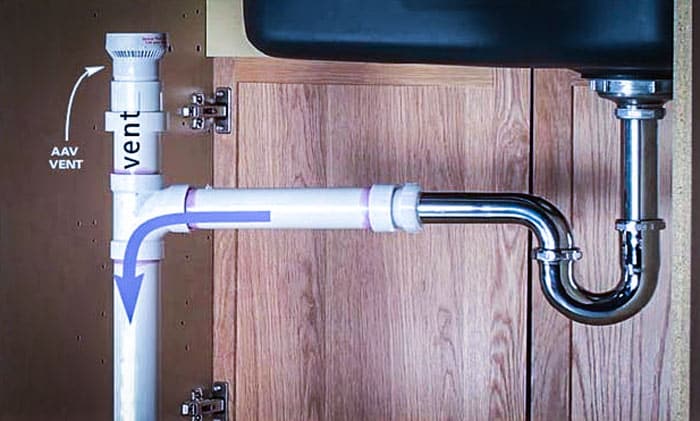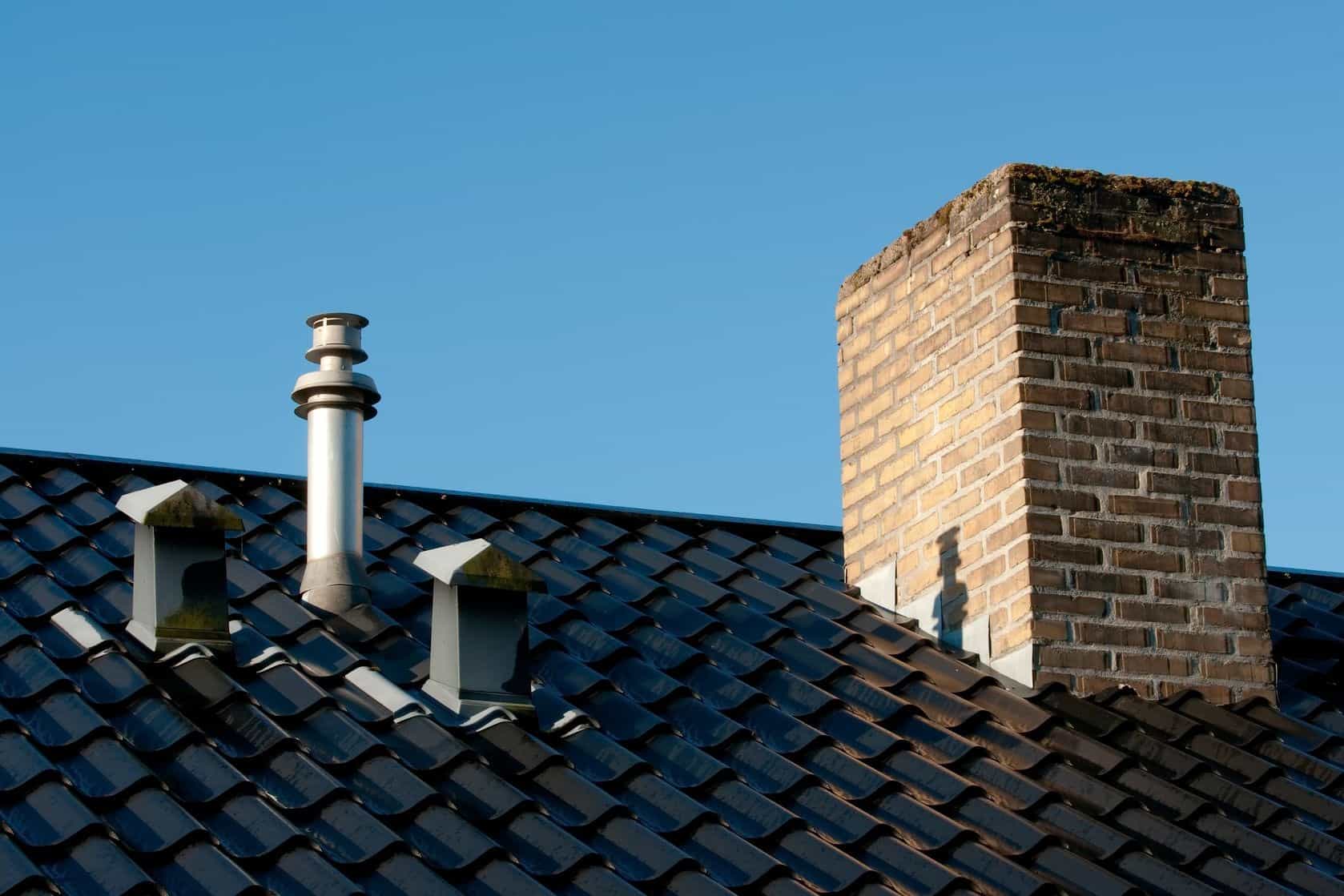The Purpose of Proper Ventilation in Supporting Plumbing Systems
The Purpose of Proper Ventilation in Supporting Plumbing Systems
Blog Article
This article directly below pertaining to Essential Plumbing Vent Pipes: Understanding Their Role is unquestionably stimulating. Give it a try and make your own personal assumptions.

Appropriate air flow in plumbing systems is typically overlooked, yet it is essential for maintaining the performance and safety and security of your home's pipes. Ventilation aids control air pressure, avoid the buildup of unsafe gases, and make sure the efficient removal of waste. In this guide, we will certainly explore the value of proper plumbing air flow, exactly how it functions, and the benefits it offers your pipes system.
Recognizing Air Flow in Plumbing
Ventilation in pipes describes the network of pipes that permit air to move with the water drainage system. These vents serve numerous purposes, including controling atmospheric pressure within the pipes, preventing sewage system gases from going into the home, and helping in the smooth circulation of wastewater.
Just How Air Flow Works in Pipes Equipments
Air Pressure Regulation
Correct air flow maintains balanced atmospheric pressure within the plumbing system. When water moves via pipelines, it displaces air. Without ample air flow, this variation can create unfavorable pressure, causing slow drains or siphoning of water from traps, which can trigger unpleasant odors to permeate into the home.
Protecting Against Sewage System Gas Accumulation
Among one of the most crucial features of pipes vents is to avoid sewer gases, such as methane and hydrogen sulfide, from gathering within the home. These gases can position serious health threats and are very flammable. Vent pipes permit these gases to leave securely outside.
Helping in Waste Elimination
Ventilation assists in the reliable elimination of wastewater by protecting against airlocks in the drain system. When air can move openly via the vents, it permits water and waste to stream efficiently through the pipelines, lowering the threat of clogs and backups.
Sorts Of Plumbing Vents
Key Heap Vent
The main pile vent, additionally referred to as the air vent stack, is the primary air vent in a pipes system. It extends from the primary drain align via the roofing, allowing gases to run away and fresh air to enter the system.
Branch Vent
Branch vents attach to the major stack vent and serve specific fixtures, such as sinks, toilets, and showers. These vents ensure that each component has ample ventilation to function correctly.
Air Admission Shutoff (AAV).
An Air Admission Shutoff (AAV) is a one-way valve that permits air to go into the pipes system without the requirement for a conventional air vent pipeline extending with the roof. AAVs are frequently utilized in renovations or locations where mounting a basic vent is impractical.
Signs of Poor Air Flow in Pipes.
Slow Draining Fixtures.
If your sinks, bathtubs, or toilets are draining pipes gradually, maybe a sign of poor air flow. Insufficient air flow can create a vacuum effect, making it challenging for water to drain appropriately.
Gurgling Seems.
Gurgling audios coming from drains pipes are usually an outcome of air being sucked via water catches because of unfavorable pressure in the pipes. This is a clear indicator of inadequate ventilation.
Unpleasant Odors.
Drain odors inside your home are a red flag that your pipes system is not properly aerated. This might suggest that sewage system gases are not being adequately vented outside, resulting in possibly harmful conditions.
Usual Ventilation Blunders.
Inadequate Vent Sizing.
Using small vent pipes can bring about bad air flow and stress inequalities in the system. It's necessary to use vents that satisfy the particular needs of your plumbing system.
Improper Vent Positioning.
Placing vents as well much from the fixtures they offer can reduce their performance. Correct positioning ensures that air can flow easily and successfully with the system.
Ignoring Code Needs.
Building codes offer details guidelines for plumbing ventilation. Overlooking these codes can cause a system that falls short to operate correctly and may cause costly repair work or carcinogen.
Advantages of Proper Air Flow.
Improved System Efficiency.
Effectively ventilated pipes systems run more effectively, with less blockages, faster draining pipes, and less strain on the pipelines. This performance extends the life expectancy of the plumbing system.
Improved Air Top Quality.
By protecting against drain gases from entering your home, appropriate air flow adds to much better indoor air quality, making your living setting healthier and extra comfy.
Preventing Water Damages.
Appropriate ventilation assists protect against water from being siphoned out of traps, which can result in sewer gases going into the home and triggering water damages with time.
Actions to Make Sure Appropriate Ventilation.
Consulting Plumbing Codes.
Always consult neighborhood plumbing codes when designing or customizing your plumbing system. These codes offer the required standards for correct airing vent and ensure your system meets safety requirements.
Regular Assessment and Upkeep.
Regular inspections can help recognize potential ventilation issues before they become major problems. Upkeep tasks, such as cleaning air vent pipes and looking for blockages, are necessary for maintaining the system in good working order.
Specialist Setup.
For new setups or major modifications, it's wise to employ a professional plumbing professional. They have the competence to guarantee the ventilation system is appropriately created and installed according to code.
Final thought.
Appropriate air flow is an essential component of any pipes system, ensuring that it works successfully and securely. By recognizing the value of air flow, recognizing the indications of inadequate air flow, and taking steps to preserve your system, you can protect against pricey issues and secure your home's air quality.
4 Things You Should Know About Your Plumbing Vents
What Plumbing Vents Are
Also called a vent stack, a plumbing vent is a vertical pipe attached to your drain line that runs through your roof. The plumbing vent pipe, or plumbing air vent, removes gas and odors from your plumbing system and allows fresh air to enter the pipes, helping the water to flow out of the drain pipes.
What Plumbing Vents Do
Plumbing vents have two basic functions. One of which is to allow unpleasant smelling wastewater and sewer gasses to escape your plumbing system instead of entering your home. Plumbing vent pipes are typically located on roofs, away from windows, to ensure the fumes exit the home completely.
The other function of the plumbing vent is to move fresh air into your plumbing system. This helps move water through every plumbing fixture in your house, like toilets and sink drains. Think of the way in which you need to let a little air into the bottle as you pour soda in order to make the drink flow smoothly.
Different Types of Plumbing Vents
True vent: This is the most common vent option. In simplest terms, a true vent is a vertical pipe attached to your drain line that exits through the roof. They often function as the main vent that other fixtures can connect to. Re-vent pipe or auxiliary vent: Attached to the drain line near specific plumbing fixtures, re-vent pipes run up and over to connect to the main vent. Common vent: Two plumbing fixtures installed on opposite sides of a wall are typically tied into the vent stack using something known as a sanitary cross. Wet vent: This venting option operates as a drain pipe and a vent at the same time. Wet vent drainage systems drain water from one fixture while venting the air from another. Although they’ve been used for over 100 years, wet vent systems have only recently been added to the plumbing code in many areas. If you’re planning on installing one in a bathroom remodel, make sure you check your local code prior to construction. Loop vent: For free-standing fixtures like kitchen island sinks, loop vents are ideal. These vent pipes run under the floor, rise from the P-trap, and create a loop inside the cabinet sink. Air admittance valve: An AAV is a one-way mechanical valve typically installed at the site of the plumbing fixture. AAVs allow venting to occur without having to tie into a larger venting system. They’re ideal for venting fixtures where you aren’t able to easily connect to an existing vent system. Common Plumbing Vent Issues
Although vent pipes typically don’t have water flowing through them, they’re still subject to many typical plumbing issues. For example, clogs are one of the most common problems associated with sewer vent pipes. If your vent pipe gets clogged, all of your plumbing fixtures tied into the vent stack will be affected.
A sink with a slow drain that bubbles and gurgles or a strong sewage smell around your toilet are both indicators that your toilet vent pipe is clogged. Because most vent pipes exit through the roof, old leaves, twigs or even a bird’s nest could be clogging the pipe.
Clogs in your vent pipe system cause a buildup of negative pressure, meaning that water won’t be able to flow out of your home very well. It’s similar to putting your finger over the opening of a straw to trap water inside. When you remove your finger, the water is able to flow out of the straw.
If you suspect you have any blockage in your vent, make sure you have a professional come examine the situation. Left unchecked, a blocked air vent can lead to other costly repairs, like leaks and sediment buildup.
Under Pressure
Pipe vents are essential aspects of a home’s plumbing system. Owning a home means learning about all sorts of things you never put much thought into before. But by understanding as much as you can about the important systems of your home, you can keep those budgets intact and those anxiety levels low.
https://www.homeserve.com/en-us/blog/home-improvement/plumbing-vents/

As a passionate reader about What Is A Plumbing Vent & How Do They Work?, I figured sharing that piece of content was sensible. So long as you enjoyed our blog post kindly make sure you remember to pass it around. Thank-you for going through it.
Booking Report this page